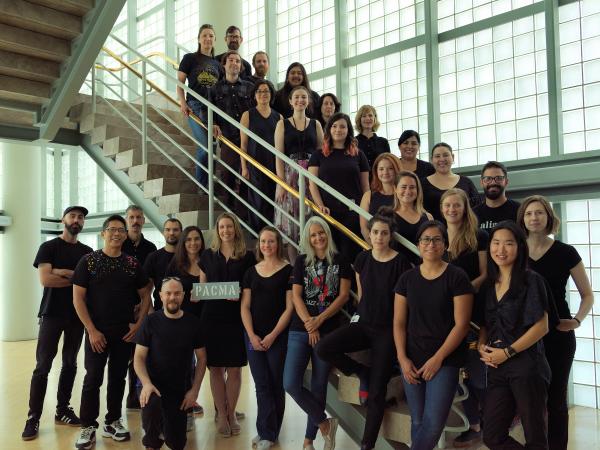From my perch on the bridge between the Art of the Americas Building and the Hammer Building it is certainly shaping up to be another busy day at LACMA. Visitors have been streaming in for several hours now, and can be seen buzzing in all directions on the Los Angeles Times Central Court below. Looking down on this activity, I’m reminded that there are two worlds that coexist at LACMA, as at all museums: one that is public, present, and shared among our visitors, and one that is behind the scenes that is looking to the future.
Over the last year, galleries in the Ahmanson, Art of the Americas, and Hammer Buildings have been closing for collection inventory and packing to prepare for the move in advance of the construction of our proposed new permanent collection building. (LACMA will remain open during the construction period, with the west side of campus—BCAM and Resnick Pavilion—hosting exhibitions; education programs for children, families, students, and adults; and music and film programs; and more.)
Beyond closed signs and locked doors exists another world removed from the hustle and bustle of the public spaces but very much alive and teeming with energy. In this world of storage boxes and crates, you will find the team responsible for deinstalling, inventorying, packing, and relocating over 125,000 permanent collection objects in preparation for the new permanent collection building, slated to open in 2023. We call ourselves PACMA.
What began as a small team of four in 2015 has grown in size to include nearly 30 staff. PACMA in its current state consists of four registrars, four collections administrators, and 20 collections management technicians. Officially formed and managed by the Collections Management department, this team has been quietly and systematically preparing the collection for the move, piece by piece, for over three years.
I’m sure you’ve been curious about what has been going on behind the scenes. What exactly is collection inventory and why is it necessary? Why are the galleries closed for this work? How do you pack a three dimensional object, or a huge painting? To answer these questions and to give you a peek of the work we’ve been doing, we’ll be running a series of blog posts highlighting interesting stories we’ve come across. We’re excited to welcome you behind the scenes! Of course, this endeavor is a huge collaborative effort, with essential assistance from our colleagues in Conservation, Registration, Art Preparation and Installation, and more—you’ll find out about how we all work together daily for this project. We hope you’ll follow along!



